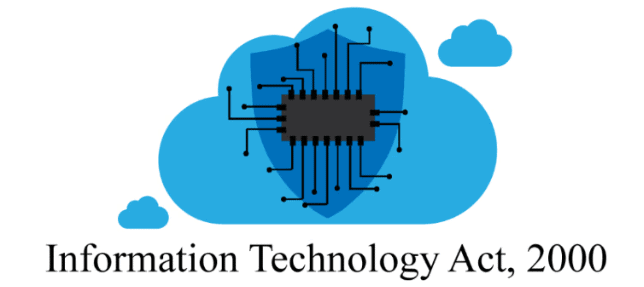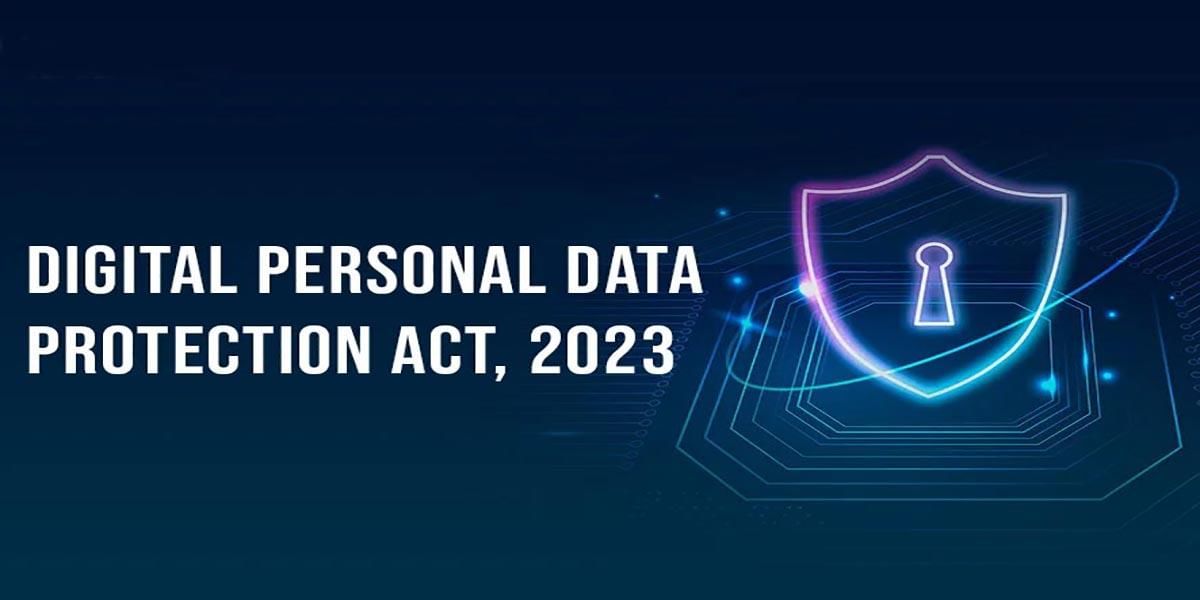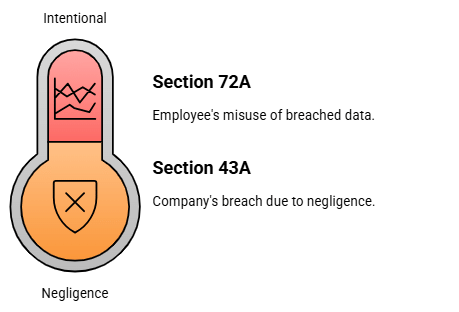Information Technology Act, 2000 | Legal Reasoning for CLAT PDF Download
| Table of contents |

|
| Data Protection Scope and Limitations |

|
| Transition to the DPDPA: A New Era in Data Protection |

|
| Applying the IT Act in Legal Reasoning |

|
| Recent Developments |

|
The Information Technology Act, 2000 (IT Act) is India’s cornerstone legislation for regulating digital activities, including e-commerce, cybercrimes, and data security. Passed on June 9, 2000, and strengthened by a major amendment in 2008, it was the first law to address India’s growing digital landscape. Before the Digital Personal Data Protection Act (DPDPA), 2023, the IT Act served as the primary framework for data protection, offering limited provisions to safeguard personal information.

Core Data Protection Provisions in the IT Act
The IT Act’s data protection framework revolves around two key sections introduced in 2008: Section 43A and Section 72A. These sections address corporate negligence and unauthorized data disclosure, respectively, and are crucial for CLAT UG preparation.
Section 43A: Corporate Liability for Data Security Failures
 Section 43A holds companies accountable for failing to protect sensitive personal data. It was designed to ensure businesses implement robust security measures to prevent data breaches.
Section 43A holds companies accountable for failing to protect sensitive personal data. It was designed to ensure businesses implement robust security measures to prevent data breaches.
- What It Entails: If a company (termed a “body corporate”) is negligent in adopting “reasonable security practices and procedures” to secure sensitive personal data, and this negligence causes harm (e.g., financial loss) to an individual, the company must pay compensation.
- Sensitive Personal Data: Includes passwords, bank account details, credit card numbers, medical records, biometric data (e.g., iris scans), and other data outlined in the IT Rules, 2011.
- Reasonable Security Practices: These are standards set by the IT Rules, 2011, or agreed upon in a contract, such as using encryption, secure databases, or regular cybersecurity checks.
- Compensation Scope: Compensation covers losses like stolen funds, identity theft costs, or emotional distress. The amount varies based on the harm, decided by courts.
- Who It Applies To: Commercial entities like online retailers, banks, or hospitals that collect sensitive data during business operations.
Case Example: An e-learning platform fails to update its antivirus software, leading to a hack that exposes students’ payment details. A student loses ₹20,000 to fraud. Under Section 43A, the platform is liable to compensate the student for its negligence, as payment details are sensitive personal data.
CLAT Exam Insight: For Section 43A questions, identify: (1) sensitive personal data, (2) negligence in security practices, and (3) harm caused. Practice scenarios where companies fail to secure data, leading to breaches.
Section 72A: Penalties for Unauthorized Data Disclosure
Section 72A punishes individuals or entities who disclose personal information without consent, particularly when it breaches a contract and is done with harmful intent.
- What It Entails: Disclosing personal information without permission or in violation of a lawful contract, with intent or knowledge of causing wrongful loss or gain, is punishable.
- Penalties: Up to 3 years imprisonment, a fine of up to ₹5 lakh, or both.
- Personal Information: Encompasses any data about an individual, such as name, email, address, or phone number, broader than sensitive personal data.
- Contractual Breach: The disclosure must violate a contract, like a privacy agreement or terms of service. For instance, a company’s promise not to share user data forms a contract.
- Intent Requirement: The act must be intentional or done with knowledge that it could cause harm, such as financial loss or privacy invasion.
Case Example: A gym employee shares a member’s health data with a diet company for payment, violating the gym’s privacy policy. The member faces harassment from unsolicited calls. Under Section 72A, the employee could face imprisonment or a fine for intentional disclosure without consent.
CLAT Exam Insight: For Section 72A, check for: (1) personal information, (2) no consent, (3) breach of contract, and (4) intent to cause harm. Differentiate it from Section 43A, which deals with negligence, not intent.
Data Protection Scope and Limitations
The IT Act’s data protection provisions focus on specific violations but fall short of a comprehensive privacy framework, unlike the DPDPA. Here’s an in-depth look at their scope and constraints.
- Addressing Data Breaches: Section 43A ensures companies protect sensitive personal data from breaches, such as hacking or accidental leaks, by mandating security measures. Compensation acts as a deterrent for negligence.
- Preventing Unauthorized Disclosure: Section 72A penalizes intentional or reckless sharing of personal information, particularly in contractual relationships, to curb misuse by those with data access.
- Role of IT Rules, 2011: These rules define sensitive personal data and security practices, requiring consent, data encryption, and transparent privacy policies to support Sections 43A and 72A.
Key Limitations:
- Limited Data Coverage: Section 43A applies only to sensitive personal data, and Section 72A requires a contractual breach, excluding many data processing scenarios.
- No Individual Rights: The IT Act doesn’t grant users rights to access, correct, or delete their data, unlike the DPDPA’s robust rights framework.
- Narrow Applicability: Section 43A targets commercial entities, not individuals or non-profits, and Section 72A hinges on contracts, limiting its reach.
- Enforcement Challenges: Without a dedicated regulator, enforcement relied on courts, which was slow and resource-intensive.
Case Example: A fintech app’s weak passwords allow hackers to steal users’ bank details, and a rogue employee sells some data to scammers. Section 43A holds the app liable for compensation due to negligent security. Section 72A punishes the employee for intentional disclosure breaching the app’s privacy terms.
Transition to the DPDPA: A New Era in Data Protection
The IT Act’s data protection provisions were temporary measures that couldn’t keep pace with modern privacy needs, leading to the DPDPA’s introduction. This evolution is a key focus for CLAT UG.
- Temporary Measures: Sections 43A and 72A, backed by the IT Rules, 2011, were India’s initial response to data security concerns in 2008, addressing corporate negligence and data misuse in contracts.
- Shortcomings of the IT Act:
- Incomplete Privacy Framework: It lacked provisions for user rights, cross-border data transfers, or comprehensive data processing rules.
- Weak Oversight: No dedicated authority meant enforcement was inconsistent, relying on courts or ad hoc measures.
- Outdated for Digital Age: The rise of social media, cloud computing, and global data flows exposed the IT Act’s inability to address modern challenges.
- Rise of the DPDPA: The DPDPA, enacted on August 11, 2023, is India’s first dedicated data protection law. It covers all personal data, grants rights to Data Principals (e.g., access, erasure), imposes duties on Data Fiduciaries (e.g., consent, security), and establishes the Data Protection Board for enforcement, superseding the IT Act’s data provisions.
- IT Act’s Ongoing Role: The IT Act remains relevant for cybercrimes (e.g., hacking under Section 66), electronic records, and digital signatures, but its data protection role is now secondary to the DPDPA.
- Constitutional Trigger: The Puttaswamy Judgment (2017) declared privacy a fundamental right under Article 21, highlighting the IT Act’s inadequacy and accelerating the push for the DPDPA.
Case Example: In 2021, a social media platform’s data leak was addressed under Section 43A, with compensation ordered. In 2025, the same case would fall under the DPDPA, requiring the platform to notify the Data Protection Board and face fines up to ₹250 crore..
Applying the IT Act in Legal Reasoning
CLAT UG tests legal reasoning through scenarios requiring you to apply IT Act provisions. Focus on Sections 43A and 72A for data-related cases.
Data Breach Cases (Section 43A):
- Approach: Confirm if the data is sensitive (e.g., medical records), the company was negligent (e.g., no encryption), and harm occurred (e.g., financial loss). The company owes compensation.
- Example: A streaming service’s weak security allows hackers to access users’ payment details, leading to fraud. Section 43A applies due to negligence.
Unauthorized Disclosure Cases (Section 72A):
- Approach: Verify if personal information was shared without consent, breached a contract (e.g., privacy policy), and was done intentionally. Punishment follows.
- Example: A delivery app’s driver shares a customer’s address with a stalker, violating terms. Section 72A imposes penalties.
Distinguishing Violations: Section 43A is for corporate negligence, while Section 72A is for intentional acts. A single case may involve both, like a company’s breach enabling an employee’s misuse.
Practice Scenario: A cab-hailing app’s outdated firewall allows hackers to steal users’ trip histories, and a manager shares some data with advertisers without consent. Section 43A holds the app liable for compensation due to negligence. Section 72A punishes the manager for intentional disclosure breaching the app’s privacy policy.
Recent Developments
- DPDPA as Primary Law: The DPDPA has taken over data protection, with rules expected to be finalized in 2025, detailing enforcement via the Data Protection Board. This shift underscores the IT Act’s outdated framework.
- IT Act’s Historical Gaps:
- Limited Rights: No provisions for users to control their data, unlike the DPDPA’s rights to access or erase.
- Weak Enforcement: Courts handled violations, lacking the DPDPA’s dedicated regulator.
- Specific Violations: Only addressed negligence (Section 43A) or contractual breaches (Section 72A), missing broader data issues.
- Recent News: Articles in 2024–2025 may highlight DPDPA enforcement, like fines for breaches, or reflect on past IT Act cases (e.g., 2020 breaches under Section 43A) to show its limitations.
- Global Perspective: The IT Act trailed global laws like GDPR, while the DPDPA aligns India with international standards, a point often discussed in legal analyses.
|
63 videos|172 docs|37 tests
|
FAQs on Information Technology Act, 2000 - Legal Reasoning for CLAT
| 1. What are the core data protection provisions in the IT Act? |  |
| 2. How does the IT Act define the scope of data protection? |  |
| 3. What changes does the Digital Personal Data Protection Act (DPDPA) bring compared to the IT Act? |  |
| 4. How is the IT Act applied in legal reasoning regarding data breaches? |  |
| 5. What are some recent developments related to data protection under the IT Act? |  |




















